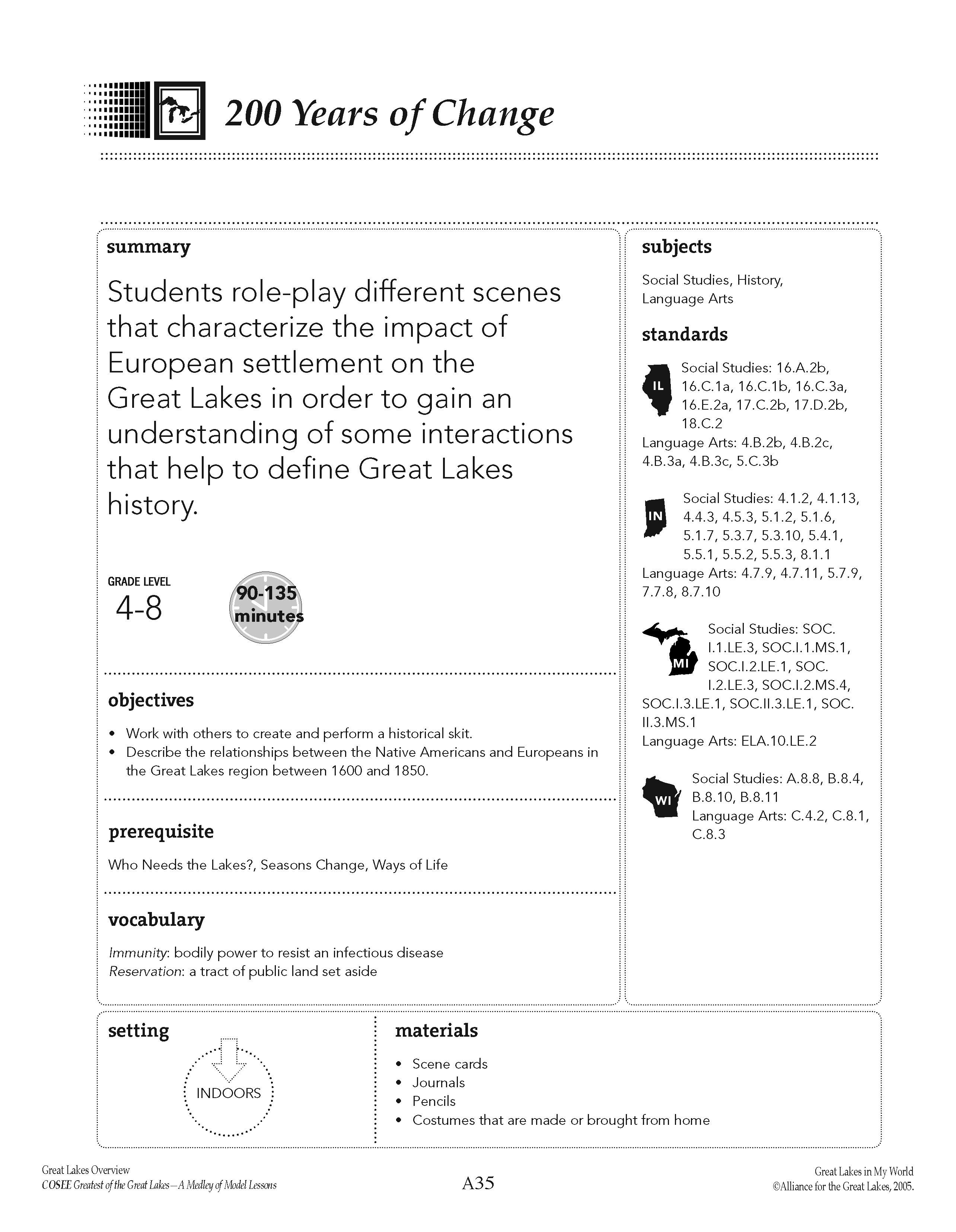
File Size: 255.88 KB
Curriculum activity where students role-play different scenes that characterize the impact of European settlement on the Great Lakes. Created in 2005.

Curriculum activity where students role-play different scenes that characterize the impact of European settlement on the Great Lakes. Created in 2005.
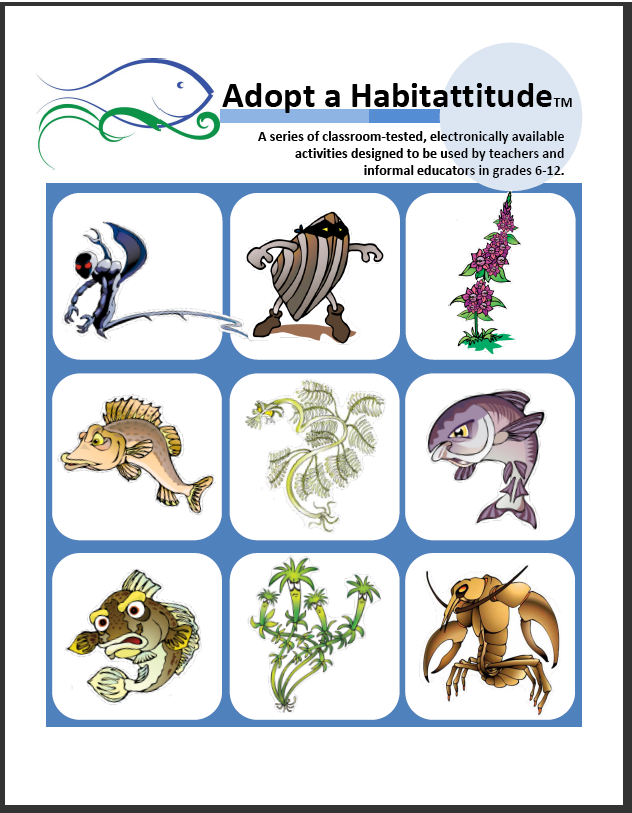
A series of classroom-tested, electronically available activities designed to be used by teachers and informal educators in grades 6-12.
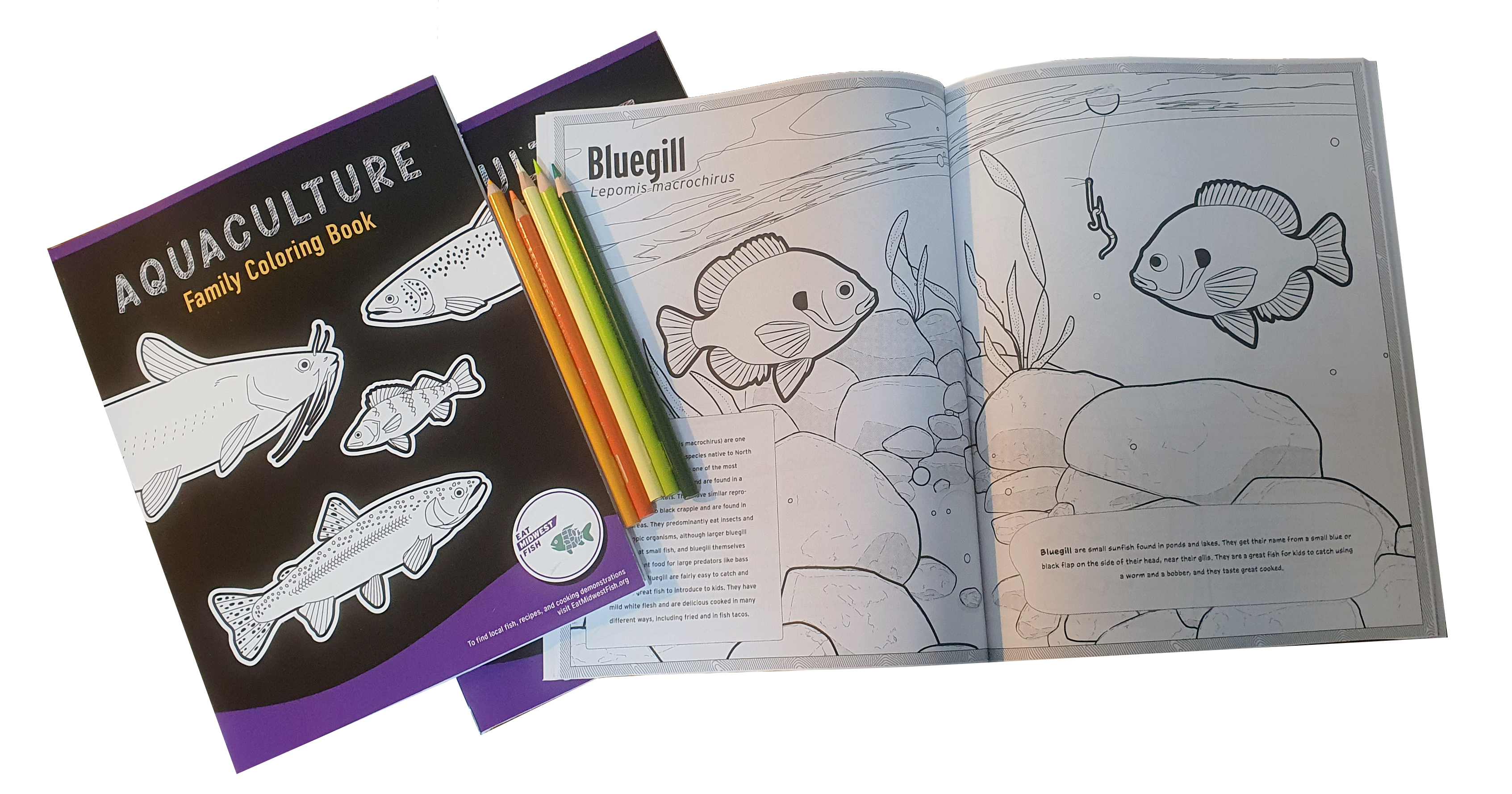
This print-your-own coloring book provides a fun and active way for children and adults to learn about the many kinds of aquatic animals that are raised on farms for aquaculture. Each spread highlights one species, pairing a beautifully illustrated coloring page with accompanying text for both advanced and beginning readers with information about aquaculture, fisheries, recreational fishing and cooking tips.
Professionally printed coloring books are also available while supplies last. Requests can be submitted to iisg@purdue.edu.
Coloring Guide: https://eatmidwestfish.org/coloring-guide
Watch and read along with IISG’s communications coordinator, Hope Charters, as she reads the beginning reader sections in the Aquaculture Family Coloring Book. Each spread of the coloring book is separated into two sections: an advance reader section on the left (for grown-ups and advanced readers) and a beginning reader section on the right. We hope that you will enjoy reading along.
Acuicultura Libro Para Colorear En Familia en español está aquí.
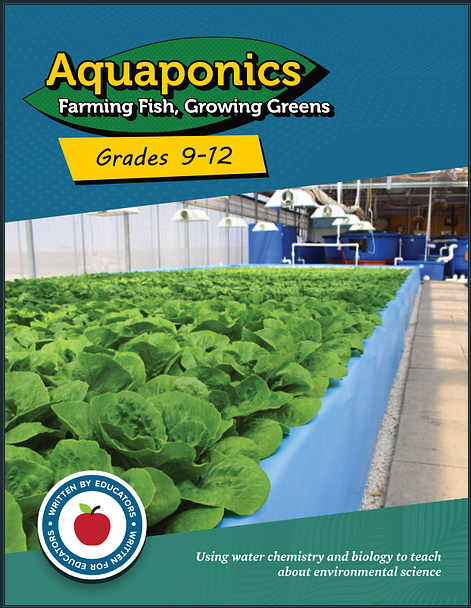
Aquaponics: Farming Fish, Growing Greens teaches STEM through aquaponics, a water-based agricultural system that combines aquaculture and hydroponics. This 9-12 grade curriculum was designed to be used along with an onsite aquaponics system. Curriculum topics include an Introduction to aquaculture, fundamental parts of an aquaponics system, the nitrogen cycle, water quality, population dynamics, our modern food system and more. Lessons were developed to build on each other and be delivered in sequence but can also be used individually.
If you would like to access to all the Aquaponics: Farming Fish, Growing Greens curriculum resources such as slide decks, submit your requests to iisg@purdue.edu.
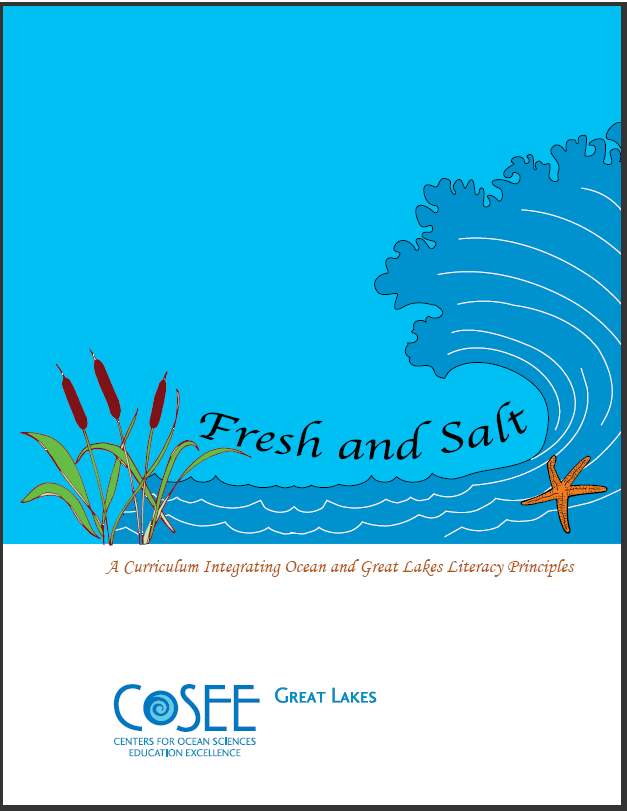
A collection of activities connecting Great Lakes and ocean science topics to enhance teacher capabilities for accessing science information that is vital to maintaining the environmental health and economic benefits of our nation’s freshwater and marine systems.

This website chronicles sediment cleanup by the U.S. Environmental Protect Agency and partners in targeted Great Lakes Areas of Concern.
For more detailed information, visit Great Lakes Mud
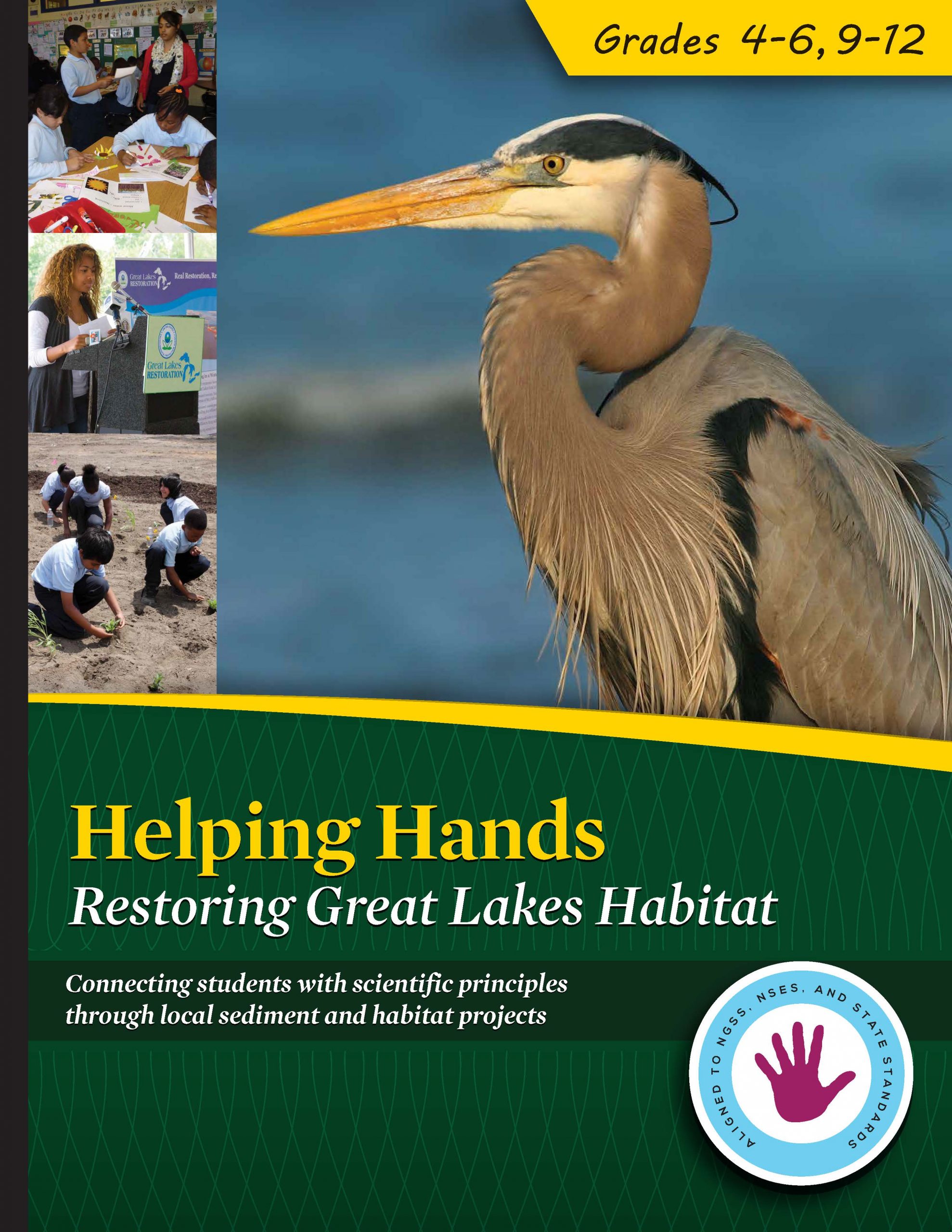
This curriculum can engage upper elementary and high school students in Great Lakes environmental stewardship. It is designed for schools located in Areas of Concern (AOC) but can apply to any Great Lakes community where large scale environmental cleanup projects are ongoing.
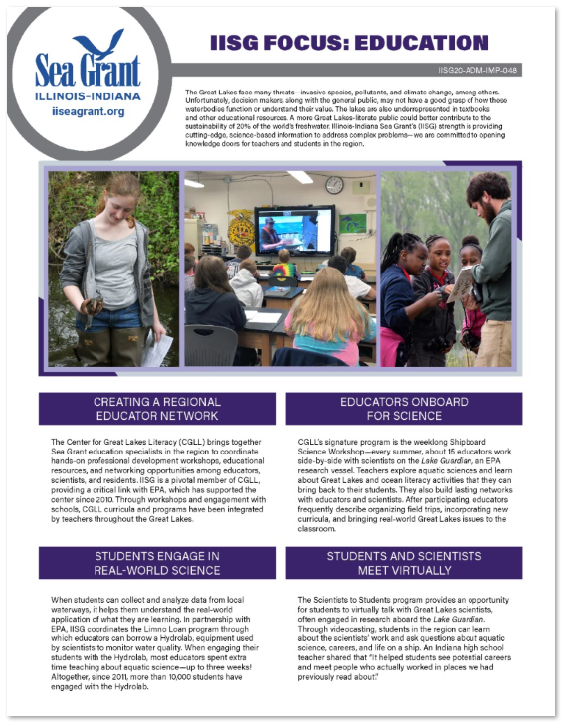
This is a quick summary of IISG’s opportunities and resources to help teachers and other educators increase their Great Lakes literacy, and ultimately that of their students.
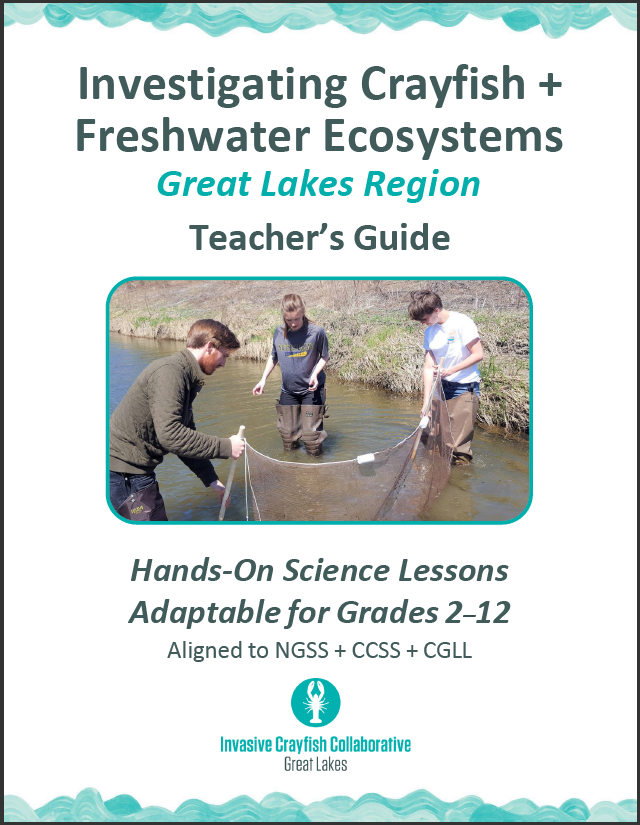
The use of live crayfish in classrooms has been identified as a pathway for the introduction of invasive crayfish into our local waterways. To address this issue, the Investigating Crayfish and Freshwater Ecosystems curriculum was developed to teach students about Great Lakes ecosystems, the significance of native crayfish, and the ecological threats posed by invasive crayfish. It contains nine lesson plans aligned to Next Generation Science Standards, Common Core State Standards, and Center for Great Lakes Literacy Principles. The curriculum is best suited for students in grades 6-12 but offers numerous adaptations/extensions to meet the divergent needs of students in grades 2–5.
This document is available on the Invasive Crayfish Collaborative website: https://invasivecrayfish.org/crayfish-curriculum/